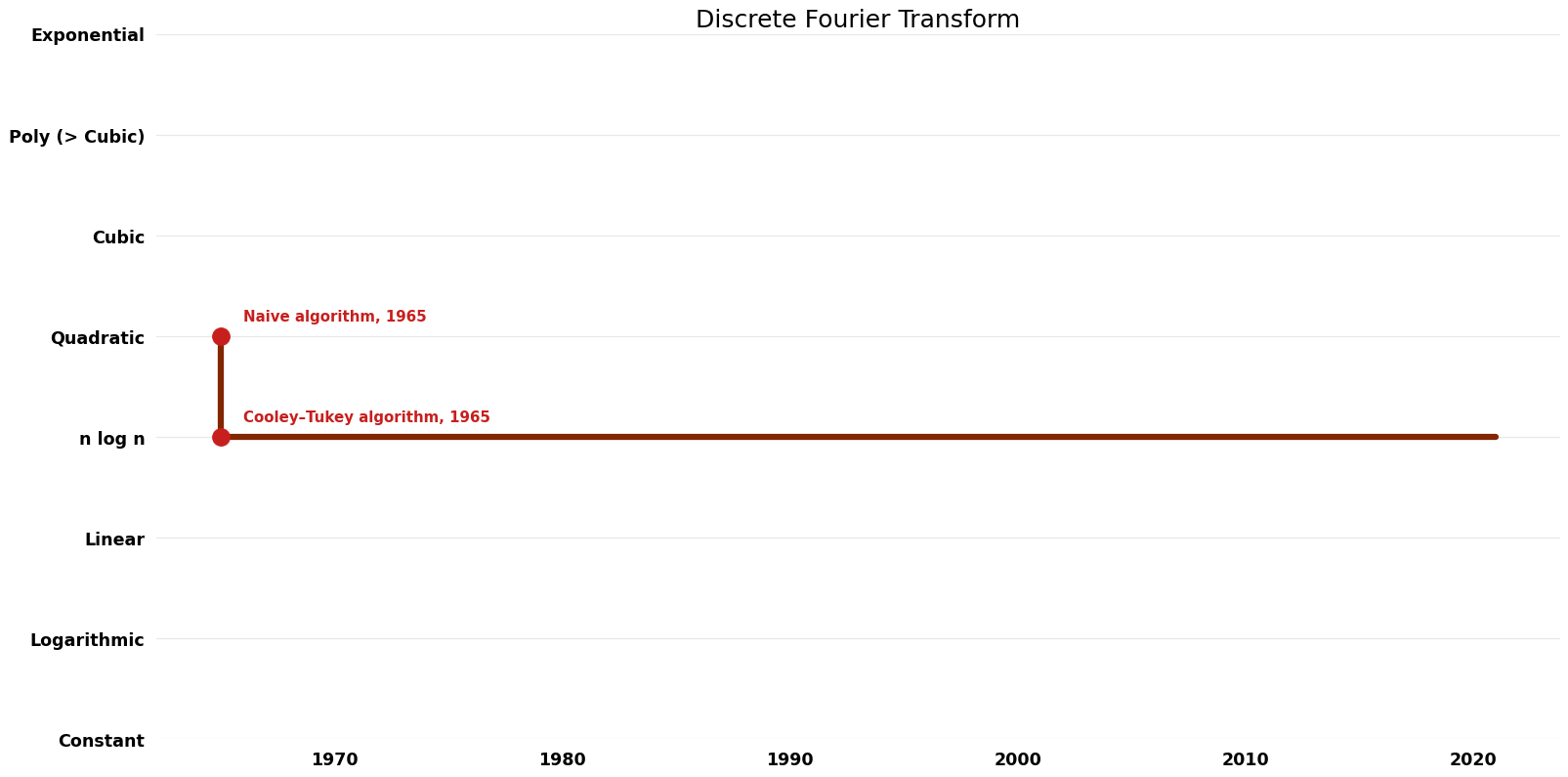Discrete Fourier Transform (Discrete Fourier Transform)
Jump to navigation
Jump to search
Description
In mathematics, the discrete Fourier transform (DFT) converts a finite sequence of equally-spaced samples of a function into a same-length sequence of equally-spaced samples of the discrete-time Fourier transform (DTFT), which is a complex-valued function of frequency.
Parameters
$n$: length of the input data set
Table of Algorithms
| Name | Year | Time | Space | Approximation Factor | Model | Reference |
|---|---|---|---|---|---|---|
| Naive algorithm | 1965 | $O(n^{2})$ | $O({1})$ | Exact | Deterministic | |
| Cooley–Tukey algorithm | 1965 | $O(n \log n)$ | $O(n)$? | Exact | Deterministic | Time |
| Rader–Brenner algorithm | 1976 | $O(n \log n)$ | $O(n)$? | Exact | Deterministic | Time |
| Bruun's FFT algorithm | 1978 | $O(n \log n)$ | $O(n)$? | Exact | Deterministic | Time |
| Yavne Split Radix FFT algorithm | 1968 | $O(n \log n)$ | $O(n)$? | Exact | Deterministic | Time |
| Gentleman; Morven and Gordon Sande radix-4 algorithm | 1966 | $O(n \log n)$ | $O(n)$? | Exact | Deterministic | Time |
| Bergland; Glenn radix-8 algorithm | 1969 | $O(n \log n)$ | $O(n)$ | Exact | Deterministic | Time & Space |
| Extended Split Radix FFT algorithm | 2001 | $O(n \log n)$ | $O(n)$? | Exact | Deterministic | Time |
| Von zur Gathen-Gerhard additive FFT | 1996 | $O(n (\log n)$^{2}) | $O(n)$ | Exact | Deterministic | Time & Space |
| Wang-Zhu-Cantor additive FFT | 1988 | $O(n(\log n)$^{1.{58}5}) | $O(n)$? | Exact | Deterministic | Time |
| Gao’s additive FFT | 2010 | $O(n logn loglogn)$ | $O(n)$ | Exact | Deterministic | Time & Space |
